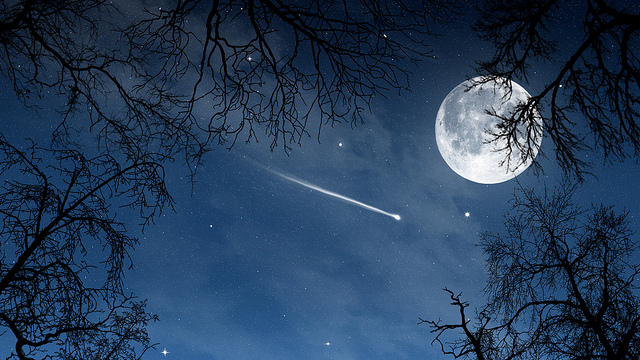
When the moon becomes full shortly after midnight on November 13, it will be the closest full moon to the earth since January 26, 1948, and there won’t be another approaching this close again until November 25, 2034.
For many people (under the age of 68) this is a magnificent opportunity to witness the biggest moon they will have seen so far in their life. November’s full moon is known as a supermoon as it reaches its closest point to the earth.
The term “supermoon” was coined by the U.S. astrologer Richard Nolle in 1979. Noelle defined it as, “A New or a Full Moon that occurs when the Moon is at or near (within 90 percent) of its closest approach to Earth in its orbit.”
This supermoon can be witnessed in its full glory on both November 13 and 14 as the perigee (closest point to the earth) is at 6.23 am and 8.52 am ET on November 14. Therefore, the moon will appear just as large and bright in the sky on the evening of November 13 as it will on the 14.
To find out the exact time this rare phenomenon will be visible in your location, please click here.
In the Northern Hemisphere, supermoons appear far larger than at any other time of the year as during the winter, Earth is closer to the sun and the sun gravitationally pulls the moon closer in to Earth.
The optimum time to make the most of a supermoon is just after moonrise when the moon is rising just above the horizon.
Even though it is merely an optical illusion, when the moon is lower, we compare it to landscape such as buildings, trees, or mountains so that the moon looks gigantic in the sky. If the opportunity arises to be by the coast, it is also incredible to watch as the supermoon rises above the ocean.
The reason this celestial event occurs so infrequently is because three things need to coincide for a supermoon to take place: the moon needs to be full, the moon needs to be close in its approach to the earth, and the earth and the sun also need to be close to one another. It is almost as though all three are coming together for one huge, energetic embrace.
Weather permitting, this supermoon will be visible to the naked eye, however using a telescope or binoculars will allow for a much better view. If the sky is clear and cloudless it will also be a perfect opportunity to capture some amazing photographs.
Mobile phones don’t tend to take the greatest pictures as the moon will often appear out of focus and distant in the sky. A shutter lens camera is recommended and if there’s a tripod handy, the images will turn out even better. Click here for some tips on how to take stunning photographs of the moon.
The 15th of November, the night after the supermoon, is another stunning evening for sky gazing as the red giant star Aldebaran (Taurus) will be travelling alongside the waning moon.
From approximately November 14th to the 20th we will also be able to witness the spectacular Leonid showers. The Leonids are fast meteors that produce trains that can last for several minutes.
The bright glare from the supermoon makes it difficult to witness the Leonid storm, so it is advisable to wait until the late hours on the 16th and 17th or the early hours of November 17th and 18th when the spectacular show reaches its peak.
The Leonids can be seen with the naked eye from any location on earth. However, so that they appear brighter in the sky and for a higher chance of seeing more of them, head to the countryside or find a dark place free from artificial light as any glow will obscure the view of the fainter meteors.
Wrap up in warm clothing and take a blanket with you so that you can lie flat out on the earth. With a relaxed gaze, look up toward the sky and try not to focus on one particular area. It is hoped that there will be as many as 15 to 20 separate showers falling from the sky every hour. For those unable to head out, click here for an online streaming of the show.
Meteors are named after the radiant that the meteor is traced back to and although they can appear anywhere in the sky, when you trace their path line back, they all come from the same point—the radiant. The Leonids appear to emerge from the constellation Leo the Lion, which is where the name Leonid originates.
The Leonids have delivered some of the most impressive meteor storms in history.
“The steaks of light we see from burning debris during a meteor shower are the leftover material from a comet that originated in the outer parts of our solar system. We are essentially seeing a remnant of the early formation of the sun and our planets and also the destruction of material that was formed 5 billion years ago, as old as the oldest rocks on Earth.” ~ Christopher Conselice
Bonus:
Author: Alex Myles
Image: Ultra Mendoza/Flickr
Editor: Catherine Monkman
Another relephant bonus:






Read 5 comments and reply